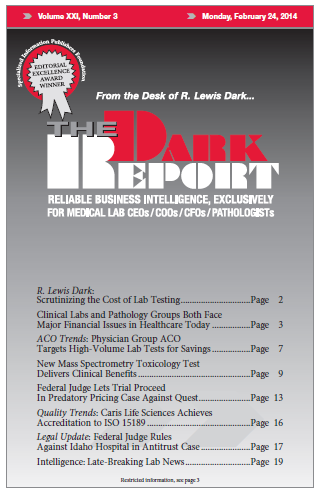CEO SUMMARY: Researchers at the University of Colorado in Aurora used mass spectrometry technology to create a paradigm-shifting toxicology test. It uses a urine specimen and can identify 112 compounds and more than 500 illicit and brand-name drugs in a single assay. For pain management testing, not only does this bend the cost curve downward, …
New Mass Spectrometry Toxicology Test Delivers Clinical Benefits Read More »
To access this post, you must purchase The Dark Report.


